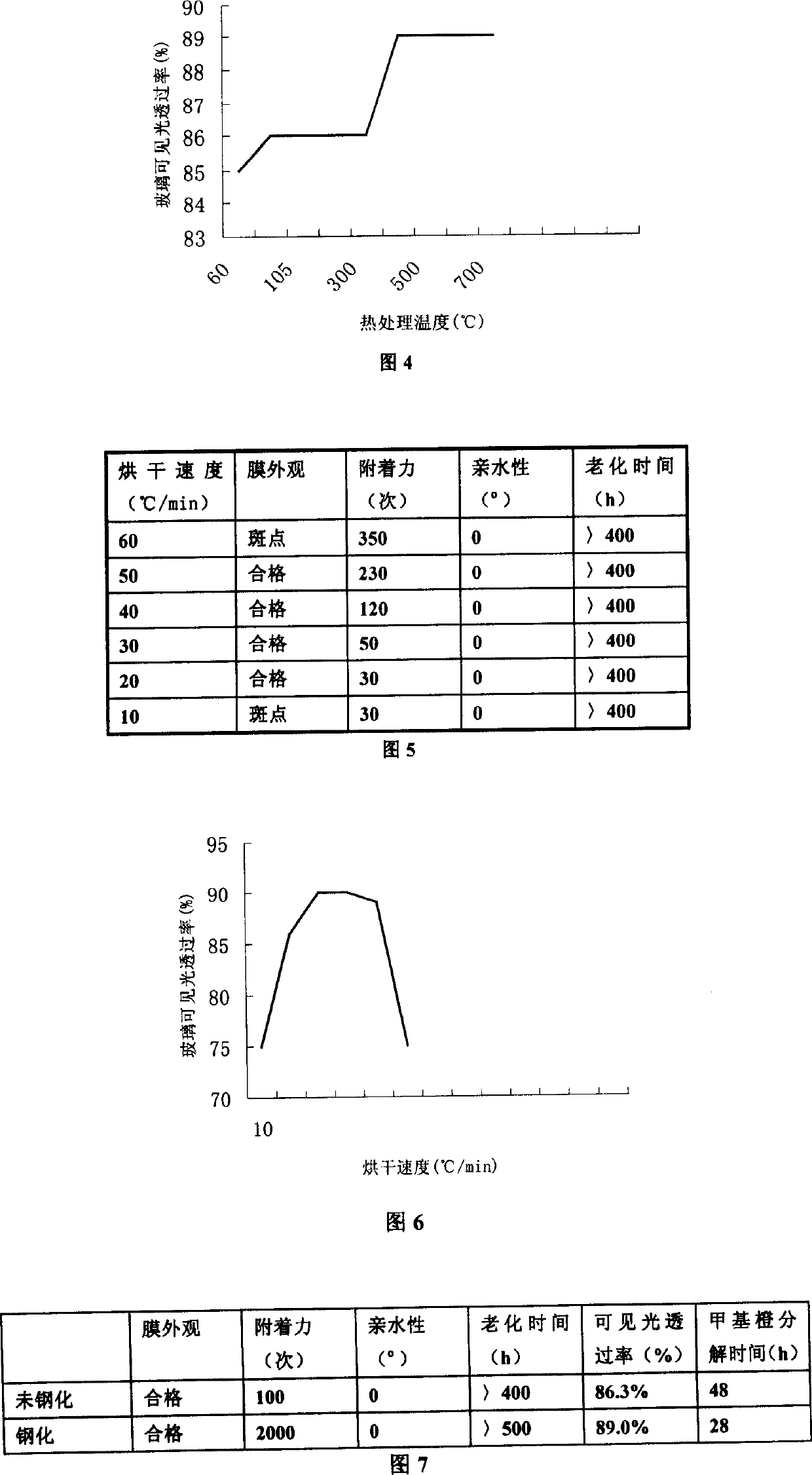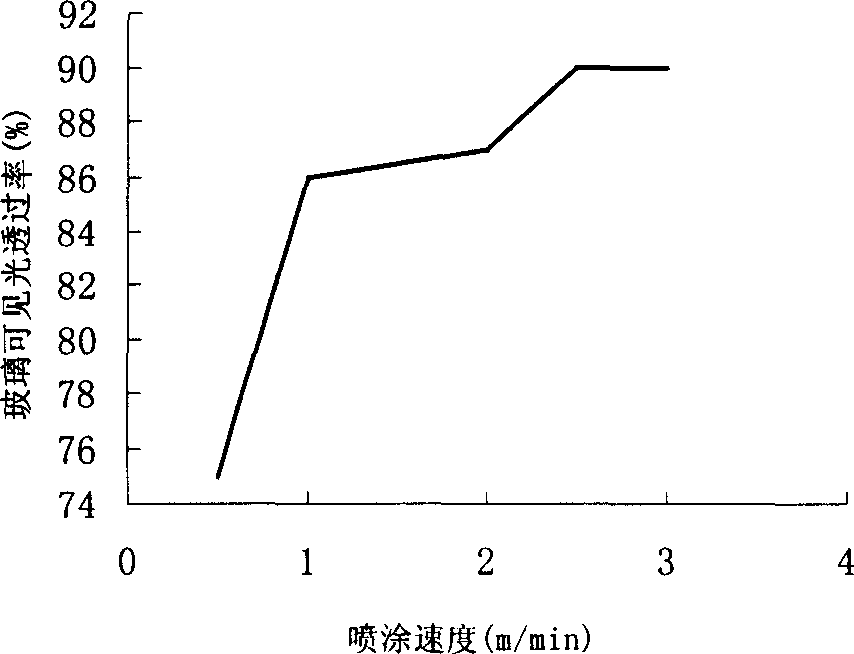Production of self-cleaning glass
A self-cleaning and glass technology, applied in the field of self-cleaning glass preparation, can solve the problems of pollution, danger, waste of water resources, etc., and achieve the effect of good transparency
- Summary
- Abstract
- Description
- Claims
- Application Information
AI Technical Summary
Problems solved by technology
Method used
Image
Examples
Embodiment approach
[0027] 1. Clean the float glass substrate with a self-made surfactant washing solution, rinse it with deionized water, dry it, and set it aside;
[0028] Second, the prepared TiO 2 The composite sol is poured into the sprayer, and the spraying speed is controlled to be 1.0m / min to spray TiO on the moving glass substrate at a speed of 1.5m / min. 2 Composite sol;
[0029] Three, will be sprayed with TiO 2 The glass substrate of the composite sol is dried at a temperature of 105°C to form TiO 2 Self-cleaning film, the TiO in the film layer 2 The particle diameter is about 30nm, the film thickness is 53nm, with nano TiO 2 characteristic;
[0030] 4. After aging at 300°C for 10 minutes, TiO-coated 2 The self-cleaning glass of the self-cleaning film has good hydrophilicity, and the water contact angle of the glass surface is θ=0°; the transparency is good, and the visible light transmittance is 85.3%. Under the irradiation of visible light, the time for methyl orange to decompo...
PUM
| Property | Measurement | Unit |
|---|---|---|
| diameter | aaaaa | aaaaa |
| thickness | aaaaa | aaaaa |
Abstract
Description
Claims
Application Information
 Login to View More
Login to View More - R&D
- Intellectual Property
- Life Sciences
- Materials
- Tech Scout
- Unparalleled Data Quality
- Higher Quality Content
- 60% Fewer Hallucinations
Browse by: Latest US Patents, China's latest patents, Technical Efficacy Thesaurus, Application Domain, Technology Topic, Popular Technical Reports.
© 2025 PatSnap. All rights reserved.Legal|Privacy policy|Modern Slavery Act Transparency Statement|Sitemap|About US| Contact US: help@patsnap.com



